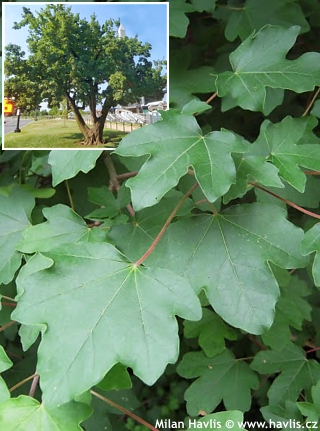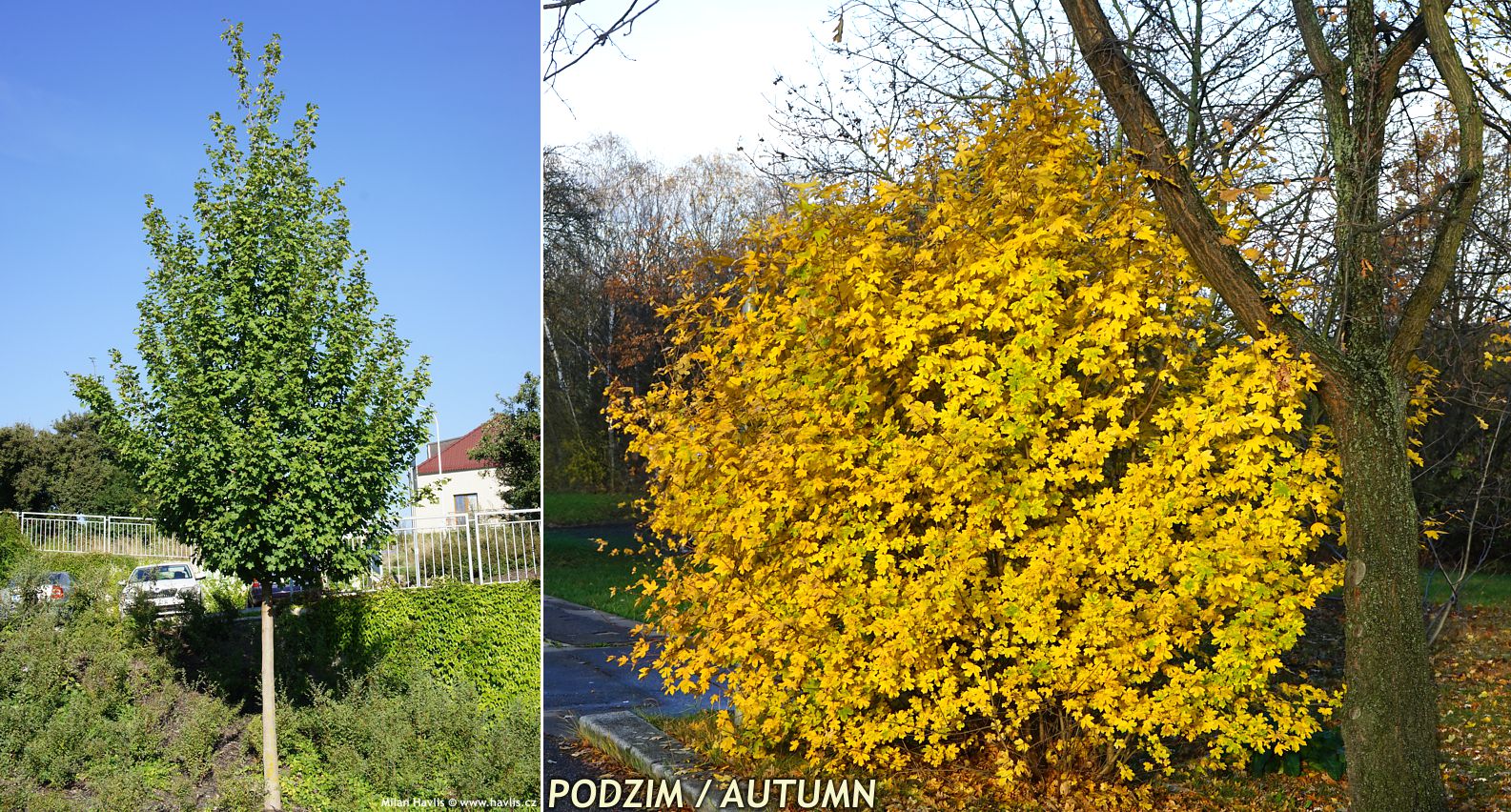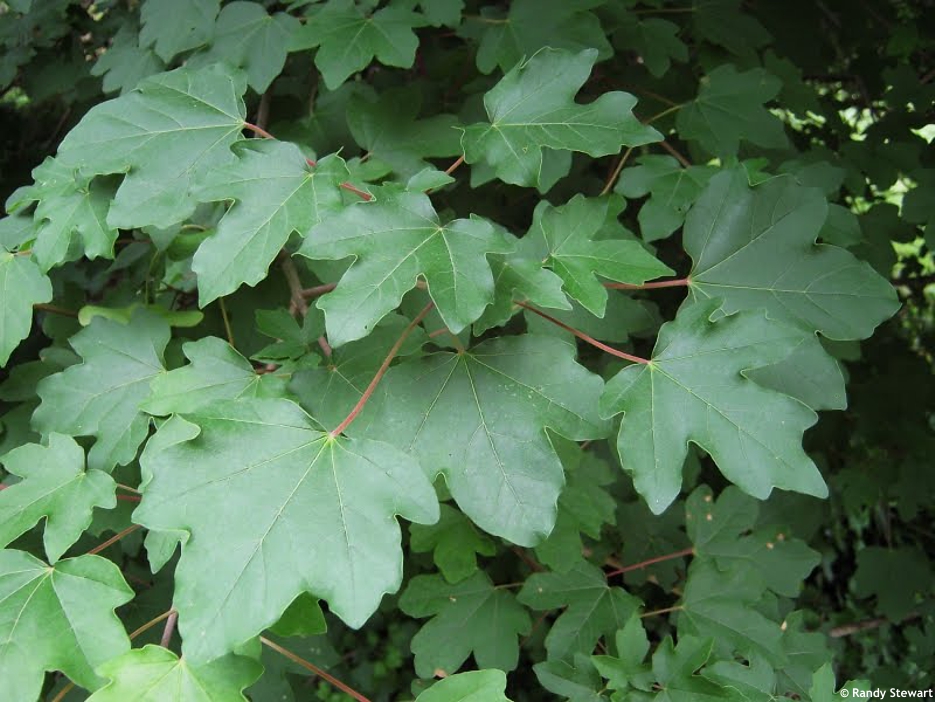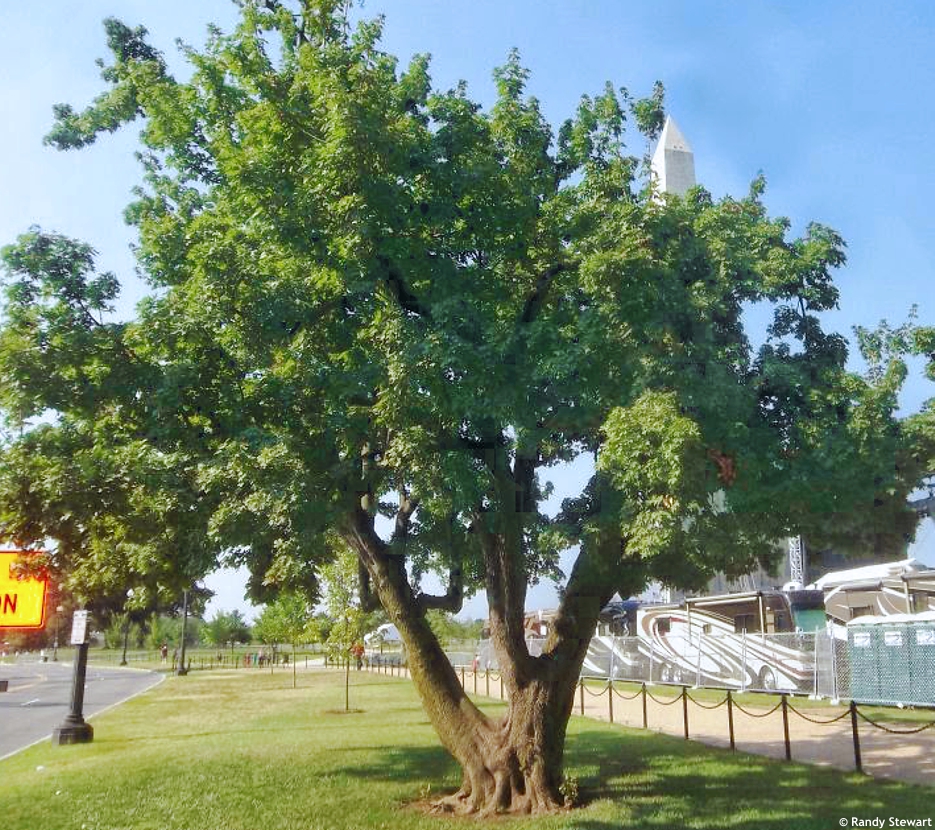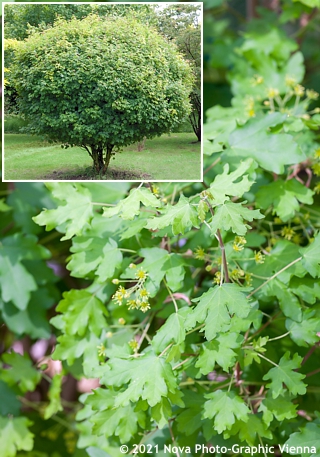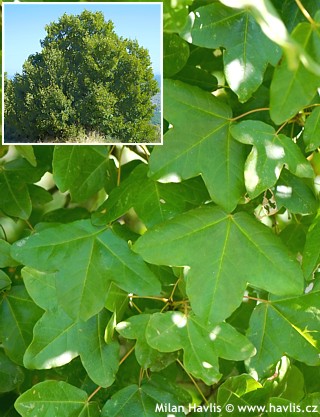Acer campestre field maple, hedge maple
Field maple (and its varieties) is one of the most frequently planted trees in Czech urban landscapes. It is of European origin and has earned its success thanks to its high tolerance to all kinds of weather conditions as well as those brought upon by humans, and longevity. It is rated a medium-tall tree, although there are some extra-large specimens of high age located all around the globe. The cultivars are significantly smaller and are also suitable for small gardens.
Leaves of field maple are deciduous, palmate, medium green, partially glossy, and decorated with shallow lobes = they lack the tips so typical for maples. In autumn they turn yellow. Just when the leaves emerge, small, yellowish flowers appear. They carry allergenic pollen and are followed by winged seeds. Older trees form attractively cork-like, fissured bark.
The tree grows fast and dense, young plants are upright and thicken with age, forming broadly oval to almost rounded crowns. However, it is renowned for being quite variable as trees from the same nursery may behave differently in different places. Its other name is Hedge maple because its growth rate and dense branching have long been utilized in screening, hedging, and in windbreaks, just like hornbeams. But in a formal hedge, you would need to trim it several times a year.
Field maple is not fussy about the soil type - it can handle anything from acidic to alkaline and wet to dry. It doesn't mind paving, salt spray, or grassing over the roots. Newly planted trees only need to be staked to the support for at least three years after planting, before they establish. Data on its hardiness vary significantly, it is commonly rated as hardy to -30 ° C, but some northerners confirm its reliability down to -40 ° C.
Last update 12-11-2021

4 386 Kè

6 247,5 Kè

9 715,5 Kè

13 923 Kè
Goods are shipped all over Europe. For Russia and U.K. and for further details please read about SHIPPING OPTIONS HERE.
Are you interested in a serious discount for orders NOV-FEB? Check your options here.
THE PRICES INCLUDE VAT of 15%. For quick conversion you can use 1 CZK = approx. 0.04 EUR
- STANDARD QUALITY - Plants of this group are 1st class quality with number of branches and overall density adequate to their size and age, considering they were container grown.
- DE LUXE QUALITY - This label guarantees a luxurious quality of manually selected plants that, compared to their height and age, are exceptionally dense and beautiful.
- EXTRA - These plants are usually mature and bigger specimens with exceptional overall appearance.
- STANDARD (as described in the plant form) means a tree with a trunk of 190-210 cm and a crown at the top, unless specified differently. The commercial size for trees is their girth measured in the height of 1m from ground.
- HOBBY - These plants are of the same quality as our standard-quality plants but younger and therefore cheaper.
- SHRUB - a woody plant with branches growing bushy from the ground level.
- HALF-STANDARD or MINI-STANDARD - a small tree with shorter trunk, its size is usually specified.
- FEATHERED - These are trees with branches growing already from the base of the trunk and up along the stem.
- GRASSES and PERENNIALS - Sizes given usually read the diameter of the pot or the clump, as specified.

































